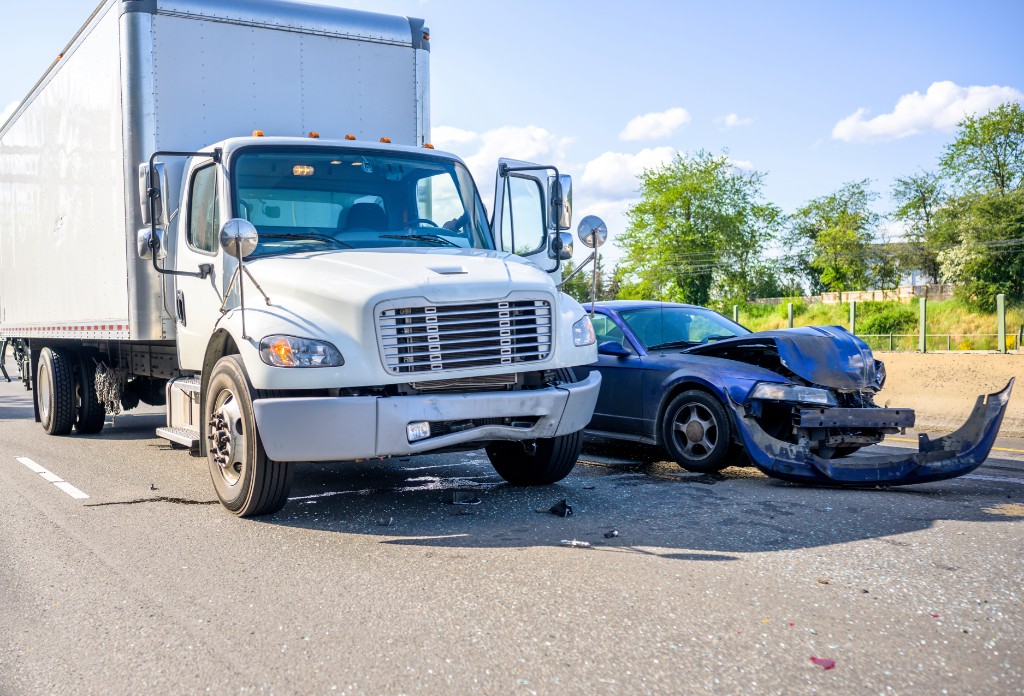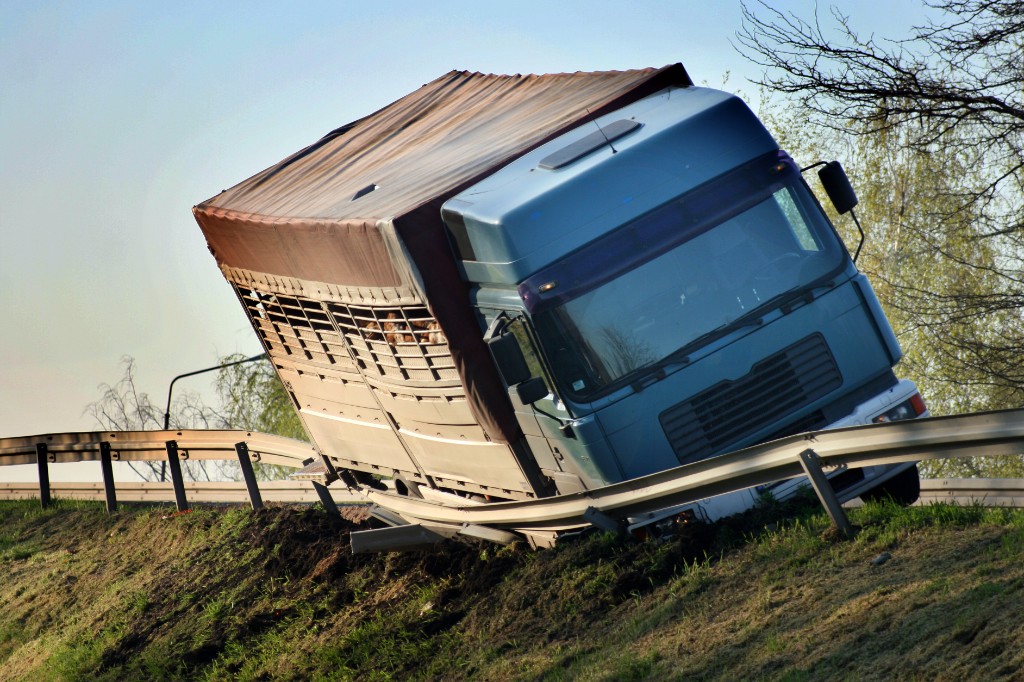April 27, 2025 | car accident Claims
Uninsured and Underinsured Motorist Claims: How to Recover Damages
Table of Contents
The civil justice system provides a way for victims to be compensated for the losses they suffered because of others’ negligence or wrongdoing. Operated by the provincial Alberta government, civil courts seek to address these wrongs, referred to as “torts” in the legal world.
Examples of negligence include if another driver is distracted by their cellphone, misses a stop sign, or is careless while driving. Another example is if the load in a semi-trailer was not secured properly, and objects (like logs) fall from the trailer onto the highway in front of other vehicles.
Unfortunately, not every driver responsible for an accident has enough insurance to compensate you for pain and suffering, lost income, rehabilitation and treatment, and out-of-pocket expenses and other losses.
The provincial Alberta government established the Motor Vehicle Accident Claims (MVAC) program in 1947 to assist collision victims who were injured by uninsured drivers.
MVAC can be accessed when the at-fault driver in an accident is known and does not have any or enough auto insurance. MVAC may also be accessed when the at-fault driver is unidentifiable, usually due to a hit-and-run.
What is an Uninsured or Underinsured Driver?
An underinsured driver has some third-party liability insurance, but not enough to cover the full extent of damages suffered by parties who were involved in the accident. Often, drivers from the United States have less auto collision coverage than drivers in Alberta and other Canadian jurisdictions.
If your injuries resulted from an underinsured driver’s actions, then you can possibly collect from that driver’s insurance through a lawsuit.
In Alberta, all drivers on the road are required by law to buy a basic level of automobile insurance, also known as mandatory or minimum coverage. This basic level of coverage consists of $200,000 in third-party liability, which covers civil legal claims for property damage or bodily injury launched by other drivers, passengers, or pedestrians.
Your basic auto insurance coverage also includes accident benefits for any injuries you suffer, and damage to your own vehicle, up to the value of replacement, plus any of your property that was inside your vehicle and damaged in a collision.
Under Alberta’s Direct Compensation for Property Damage (DCPD) auto insurance reform, in effect from Jan. 1, 2022 onward, drivers submit claims for property damage directly to their own insurers. However, DCPD does not cover any property damage caused by an unknown or uninsured driver. If an unknown or uninsured driver is at-fault for your collision, then you may submit an MVAC claim.
An uninsured driver is one who has no auto insurance at all. This includes drivers whose insurance recently expired.
When Does Uninsured/Underinsured Coverage Apply?
MVAC provides a way for car accident victims to recover damages when the at-fault driver who harmed them was uninsured.
Several conditions must apply for your MVAC claim to be accepted:
- you have suffered physical injuries from the auto accident (property damage is ineligible);
- you live in Alberta (if you live in another jurisdiction with a similar program, you may still be eligible);
- the motor vehicle accident occurred in Alberta;
- the accident was the fault of an unidentified or uninsured driver, and;
- only the uninsured or unknown driver is at-fault.
If there was more than one victim, the payment (of up to $200,000) will be split among all victims equally. To start an MVAC claim, you must first file a lawsuit against anyone who is liable for your accident and resulting injuries. If you do not know who the at-fault driver was, you must file a lawsuit against The Administrator of the Motor Vehicle Accident Claims Act.
DCPD does not replace your right to sue an at-fault driver for damages besides those inflicted on your vehicle and any contents (your property) within. Situations where a lawsuit may be appropriate are when there is damage to other property (such as a fence) or when accident benefits are insufficient to cover your medical treatment costs.
Accident benefits cover up to $50,000 of treatment for 2 years in cases of serious injuries (like a broken limb) or catastrophic injuries (such as paralysis). Treatment costs are defined as any services and supplies “essential for the treatment or rehabilitation of the injured person” in the opinion of both the injured person’s attending physician and their insurer’s medical advisor (with certain limits on specific treatments, such as $1,000 for chiropractic). Accident benefits also provide payments in case of disability or death as well as grief counselling and funeral costs.
Compensation for other out-of-pocket expenses, such as childcare, or other damages, like pain and suffering, can be pursued via lawsuit. Similarly to most other torts, you have up to 2 years from the date of the auto accident to file a lawsuit.
If the at-fault driver was underinsured, your auto insurance policy may permit you to use your own third-party liability coverage to top up the at-fault driver’s (through your optional “Family Protection Endorsement” or “SEF 44”) as long as your coverage exceeds the at-fault’s driver’s and all other sources of settlement have been exhausted.
Filing a Claim Against Your Own Insurer for Compensation
All auto insurance in Alberta is offered through private insurers. These insurance companies must provide minimum levels of coverage, as described earlier, at premiums determined by the provincial Automobile Insurance Rate Board.
Private insurance companies have the right to offer optional coverage and benefits to customers as well. If you purchase optional collision coverage, it will pay for damage to your vehicle and its contents when you are at-fault (to the extent you are found to be at-fault) or the damage is due to an uninsured driver.
As noted above, DCPD covers property damage. However, it only applies to damage that was not the fault of the covered driver. If a driver is found to be only partly at-fault, then DCPD will cover the remaining portion of vehicle damage. Otherwise, the at-fault driver is responsible for all property repair and replacement costs out-of-pocket.
Proving Another Driver’s Lack of Adequate Insurance
Showing MVAC, your insurance company, or the courts that the at-fault driver lacked adequate insurance starts with recording that driver’s information, including name, driver’s licence number, licence plate number, name of insurer, and policy number.
If police are contacted and attend the scene, request a copy of the police report afterwards, which should contain these details.
Since fault may not be immediately obvious or agreed-upon, you should gather this information from all drivers at the accident scene if you are physically able to do so, as well as contact information for any witnesses present (bystanders or passengers in the vehicles involves).
If an uninsured driver is co-operative and informs you of their inadequate insurance, contact MVAC as soon as you can. If the driver is unidentifiable or fled the scene, you have 90 days to inform MVAC of the hit-and-run. Taking photos and videos of the involved vehicles, the accident scene, and your injuries could aid in later identification efforts and proving your case.
Working With Legal Counsel to Pursue Compensation Following an Uninsured or Underinsured Accident
The provincial government recommends seeking legal assistance if preparing to file a lawsuit related to an auto accident, including claims against MVAC. We advise anyone considering filing a car accident lawsuit to speak with a qualified lawyer as soon as possible.
Our Calgary personal injury lawyers have dealt with all types of claims, many of them related to car accidents caused by uninsured and underinsured drivers.
You can call us any time at 1-888-494-7191 to arrange a free initial consultation where we can offer you legal advice about your potential motor vehicle accident case.
Written by Christopher H. McDougall
Personal Injury Lawyer
Lawyer Christopher McDougall’s practice focuses on personal injury claims, including motor vehicle accident claims, slip and fall claims, and long-term disability claims.
More car accident Topics
Here’s more information on car accident related topics that we think you might find helpful.

car accident
|
May 15, 2025
Alberta’s Minor Injury Regulation Explained: What Is the Alberta Minor Injury Regulation and Who Does It Affect?
The Alberta Minor Injury Regulation (“MIR”) applies to injured victims of motor vehicle accidents in Alberta. MIR was created by the Alberta provincial government to…

car accident
|
May 14, 2025
Key Differences Between Truck and Car Accident Claims in Alberta: Why Truck Accidents Result in More Severe Injuries and Damages
Trucking firms usually carry insurance that exceeds that of passenger cars. The main reason for this is the damage and injuries that can result from…

car accident
|
May 13, 2025
Filing a Claim After an Alberta Truck Accident: Steps, Deadlines, and Compensation: Understanding Alberta’s Limitation Periods for Truck Accident Claims
Limitation periods for lawsuits in Alberta are restricted by the Limitations Act of Alberta. In the case of truck accident claims, it is necessary that…
Speak With Our
Legal Team for FREE
Find Out if You Have a Case in Under 5 Minutes
Speak to a Lawyer Now!
We’re here to help.
